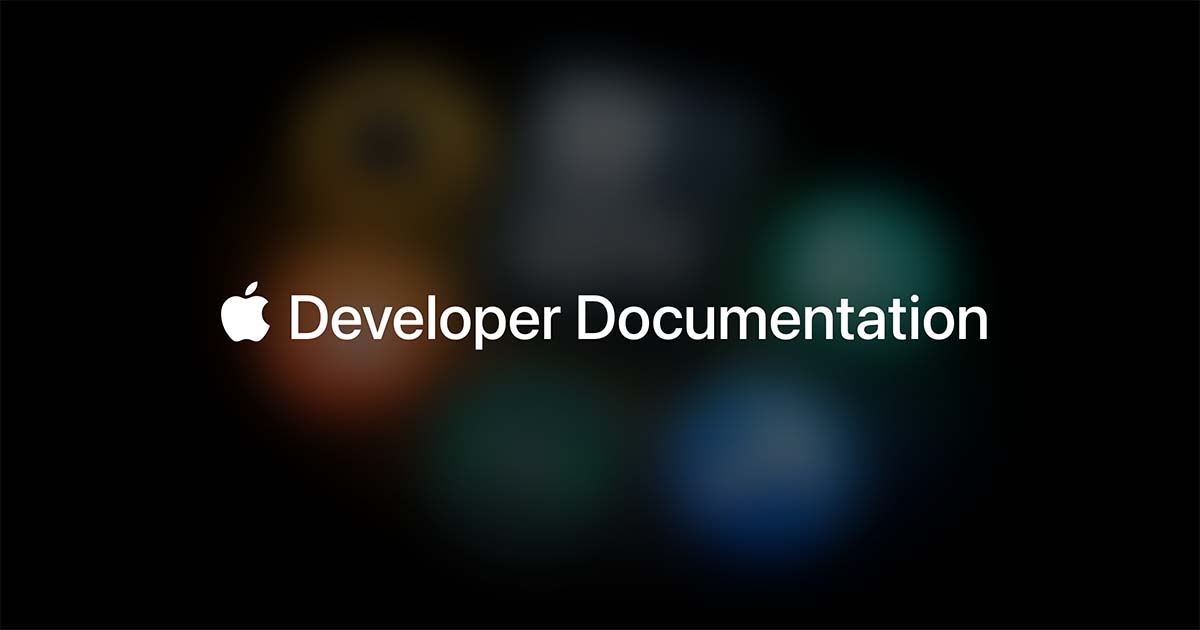Designing Distraction Free Computers
Designing distraction free computers using an Action-Centric Design approach.
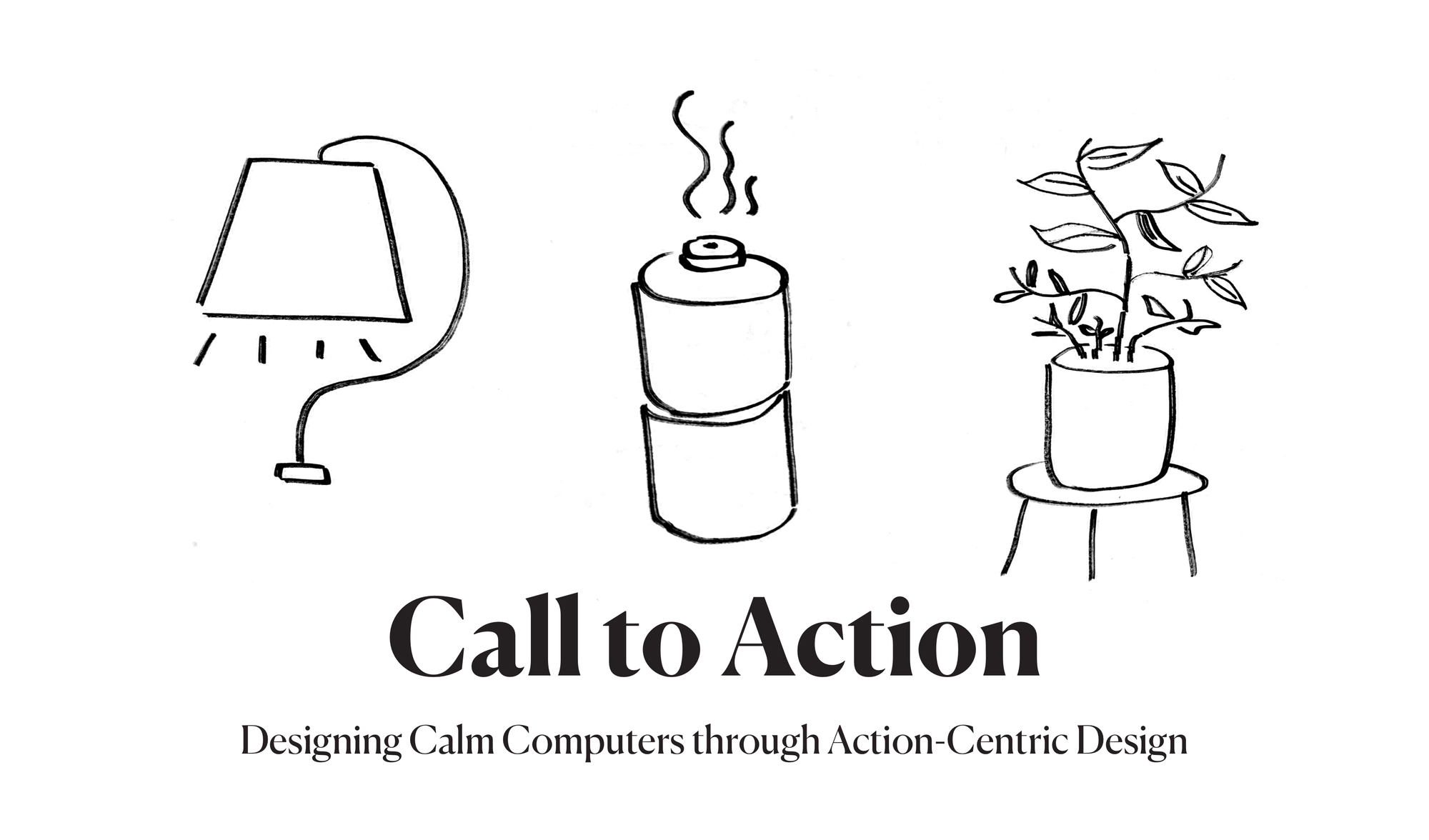
Last fall as a completion of Master of Design program at UC Berkeley, I researched into designing computers that are invisible. The following prototypes and framework are a representation of that research.
Introduction
Smartphone addiction is a problem. The modern day computers that enable us to do so much are also a giant source of distraction. With every app seeking our undivided attention, getting things done on a modern day computer is a challenge.
The problem is, apps being addictive isn’t just a one-off phenomenon, with an increasingly saturated market, every app on a smartphone is incentivized to create “addictive user interfaces” that exploit habit forming patterns for their benefit, to maximize engagement on their platform. These addictive interfaces in-turn result in an experience that while provides people with entertainment, it also distracts them when they’re working or studying. Patching it with screen time apps doesn’t really help it, it just applies band-aid to a wound.
“My fundamental belief is, if you’re looking at your phone more than you’re looking in somebody’s eyes, that’s a problem”
- Tim Cook, Apple Inc., December 2024
Through this thesis, I explored this problem in the context of a student’s life, the role smartphones play in their life, and how their day to day experiences can be improved.
Studying with smartphones is a distraction-prone experience
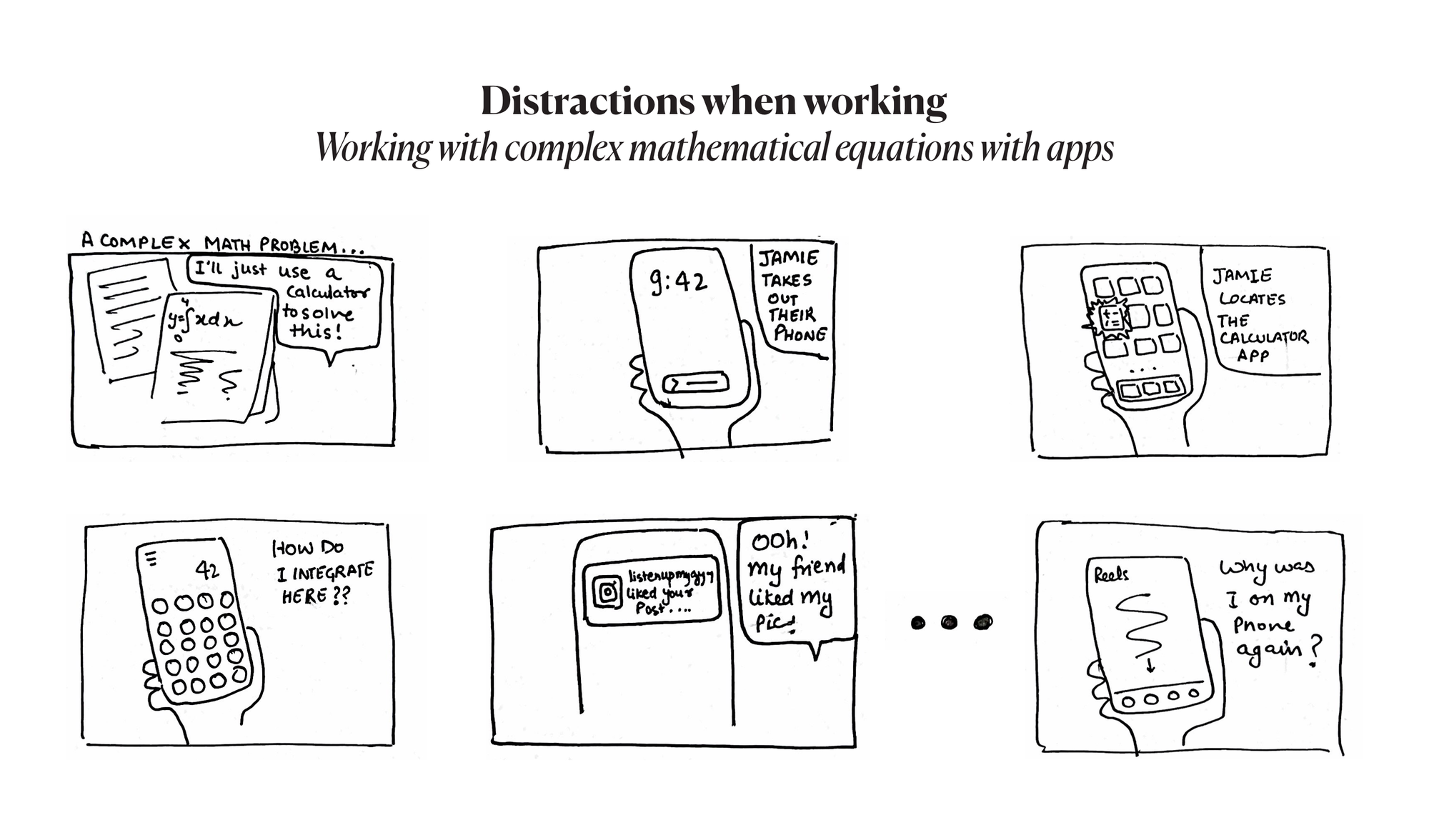
This is a day in the life of a typical college student. They pick up their phone for study, and soon a social media notification derails their task by sucking them into an endless abyss of content.
Why computers?
Before we solve this problem, let’s take a step back and analyze as to why we actually use computers? Why do we need them?
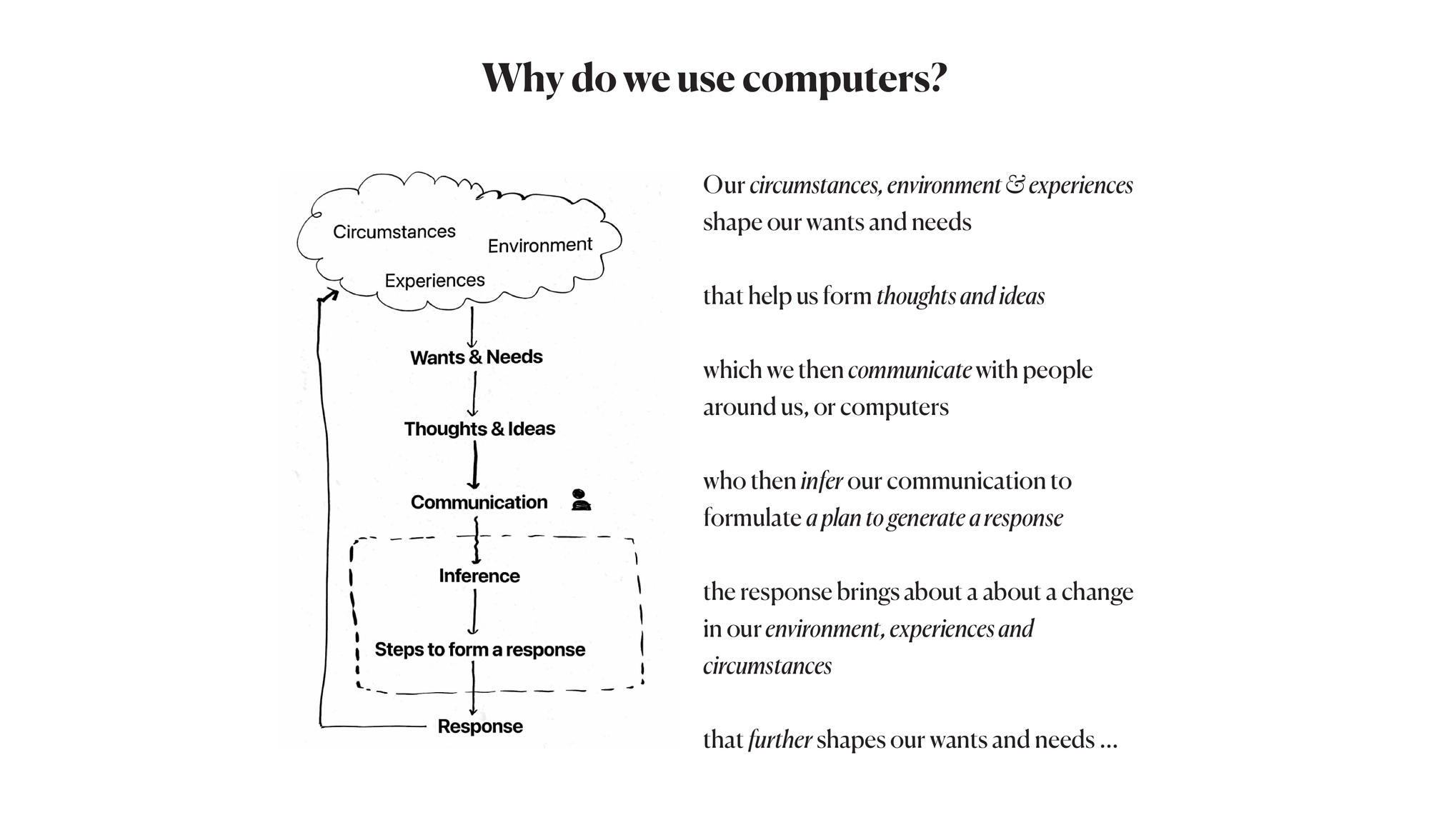
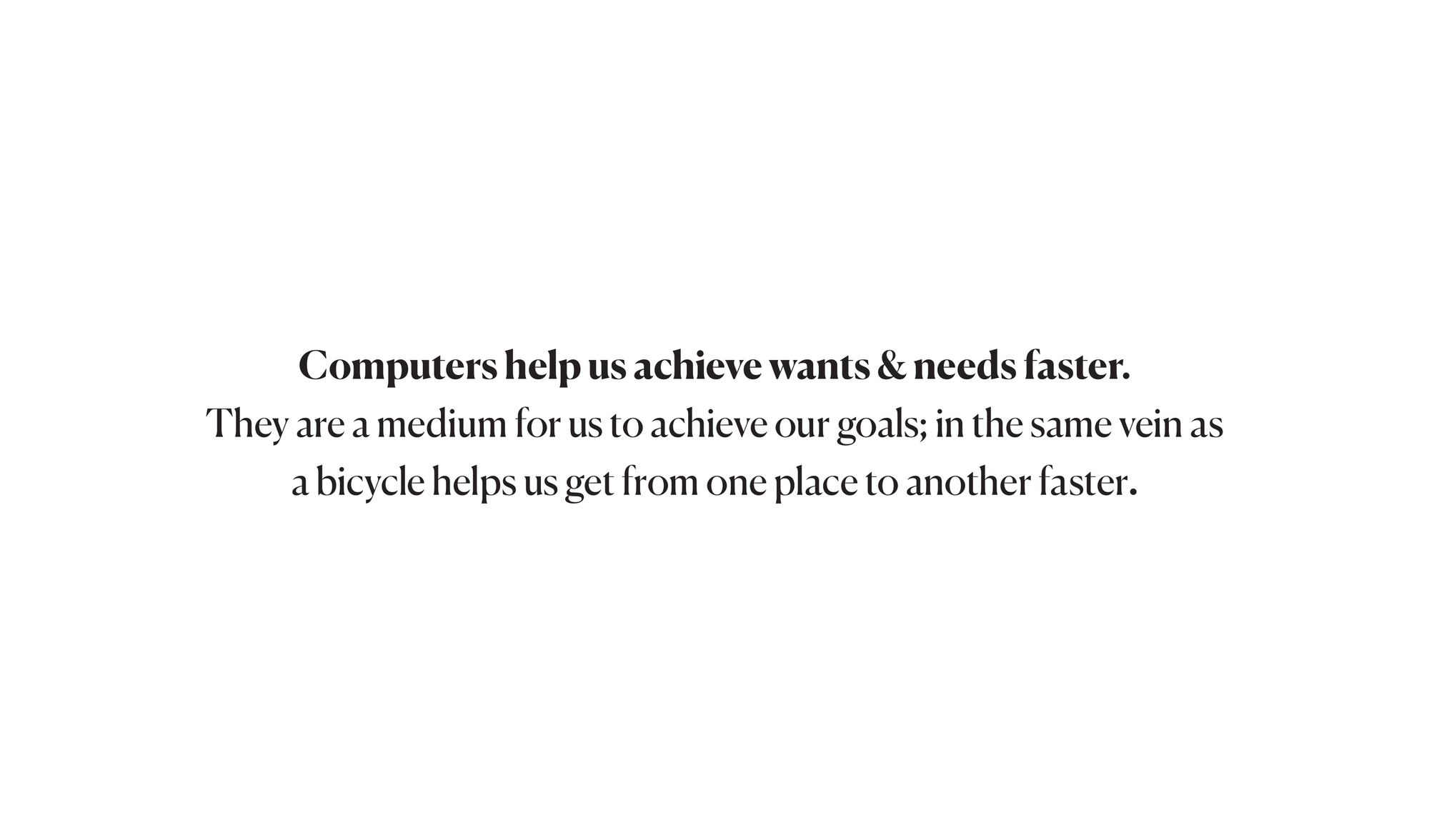
Clearly, our modern day computers are not great tools by this metric. The software we use is incentivized to have us spend more time on it, than achieving our goals.
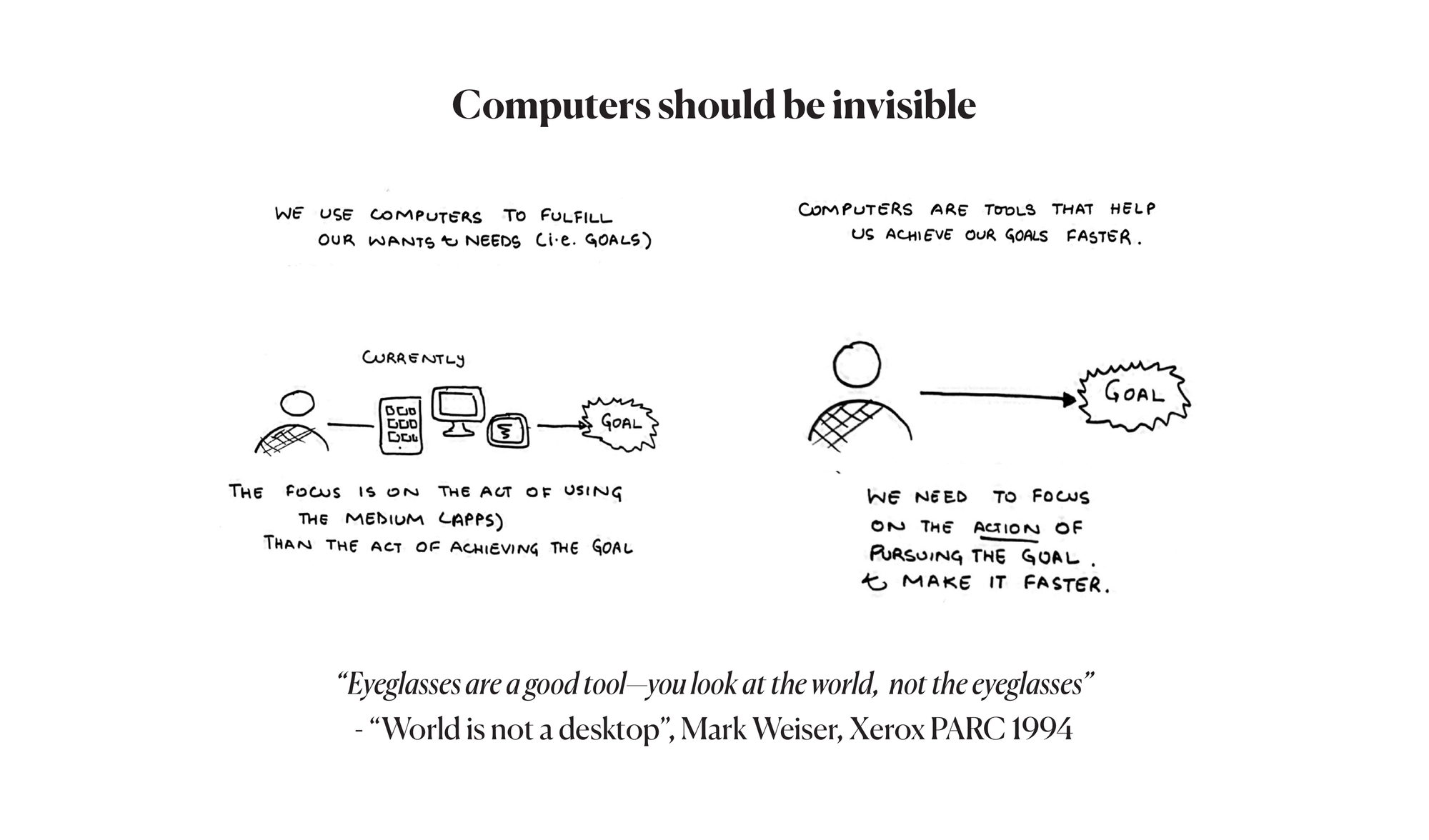
“Eyeglasses are a great tool, people look at the world through the eyeglasses, not the eyeglasses” - Mark Weiser, 1994
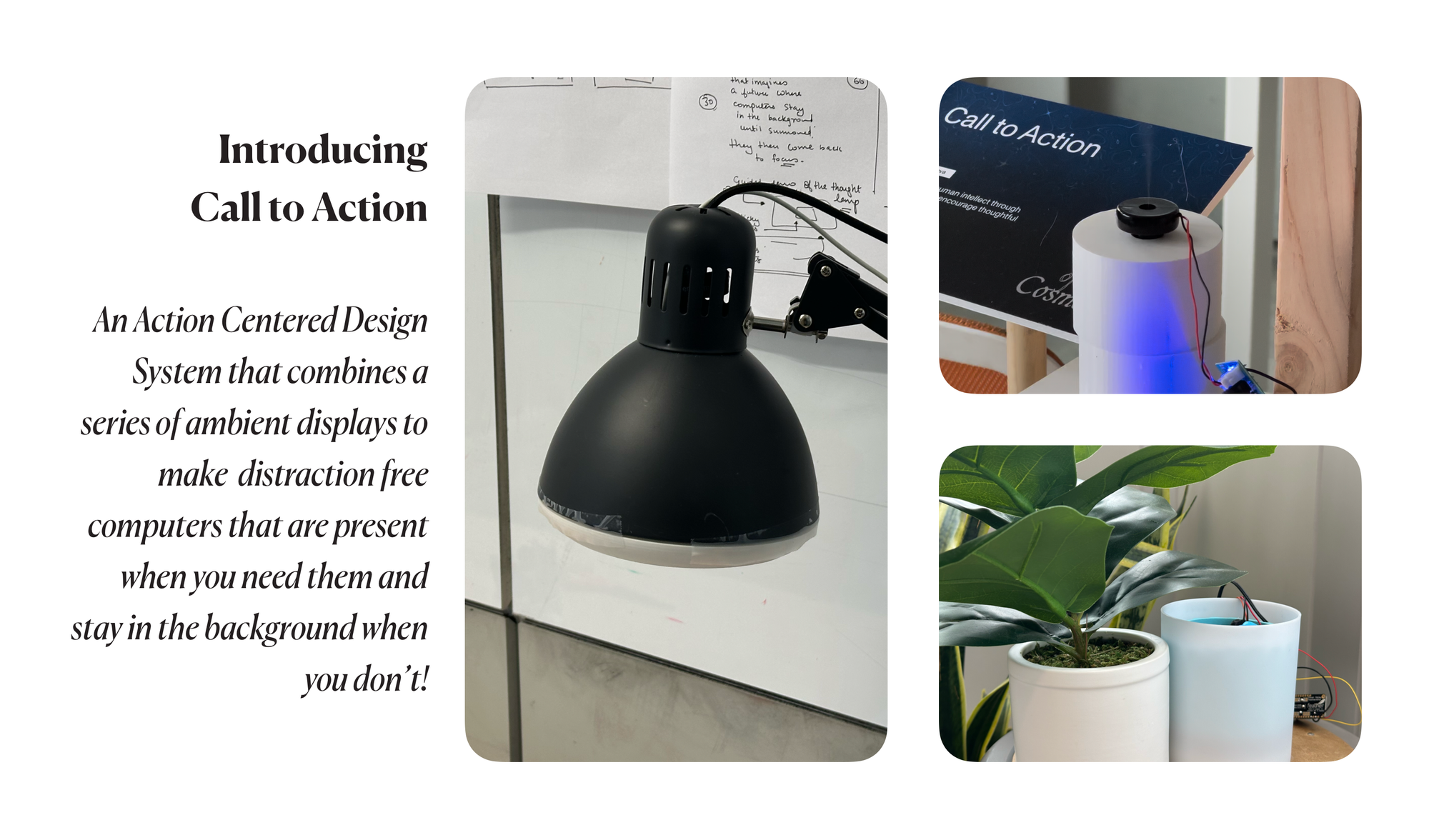
Ambient Lamp
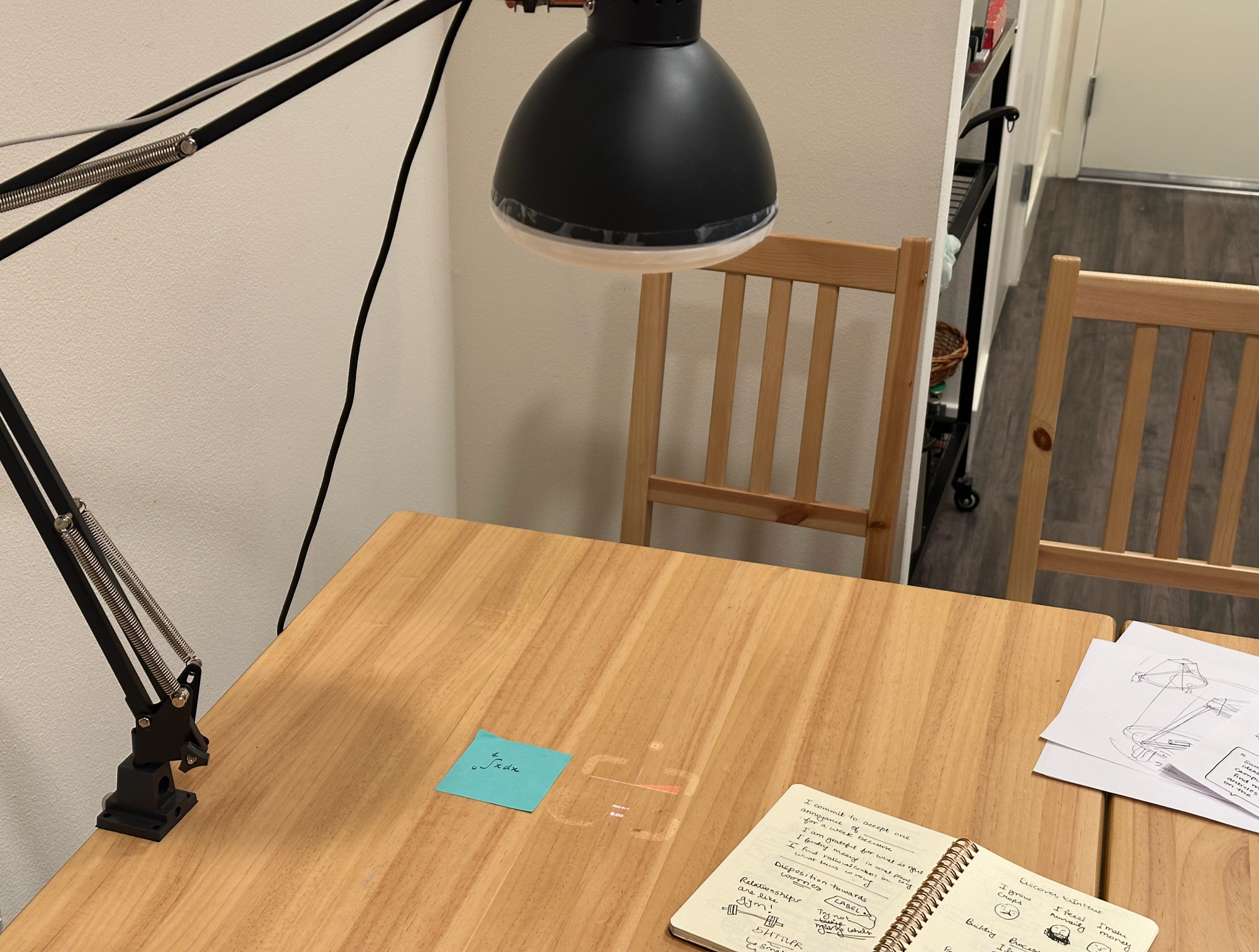
The ambient lamp is designed to be the central hub of the ambient computing system, as a student’s desk lamp it acts as a normal lamp; until the student decides to interact with it as a computer.
The student can place sticky notes and have it answer complex mathematical equation in which case it works like a calculator
The student can place their class notes and have it save them.
During my user research, I discovered an interesting trend amongst young students. They increasingly prefer hand-writing their own notes because of the tactility that putting pen on paper provides. At the same time they want to be able to search through their notes.
The ambient lamp, solves this problem in an interesting way. It sidesteps the need to buy sophisticated camera laden smart pens to digitize notes, or using touch screen tablets, It lets people pick their medium; their choice of pen, their choice of paper; their note taking style; their preferred language & and meets them where they are, by simply scanning, transcribing and summarizing the notes, which the student can then look up any time.
Students can search through their scanned notes; to get key information when they need it. The lamp also supports audio input.
Because the audio input is natural language input. Students don't need to speak in English; They can speak to the computer in their own native-language. Here I am asking the same query in Hindi.
Olfactory Reminder
The fragrance a freshly cooked meal travels faster than anything else to indicate that lunch is ready. The smell of a burnt toast is enough of an indicator for us that we messed up the breakfast, we don’t have to look at the toaster to tell that. Olfaction is a powerful sense. It’s capable of grasping large amounts of information even with subtle changes in our environment and yet it doesn’t require our undivided attention.
The olfactory reminder is a way of reminding people of different things through smells. It’s an abstract ambient display that can be configured based on what the student wants to be reminded about; and over time the release of a certain scent leads to them building a muscle memory of the task.
One such example would be to a subtle nudge to the user to take mindful breaks when they are studying. A scent from a different corner of the room would indicate them of a change in the environment and would encourage them to get up and move around. A scent of their favorite flower could also encourage them to take an outdoor walk.
Another example could be to indicate the golden hour of a day by infusing the room with a scent of roses. A photography student could use the smell of roses as a cue to step outside and click pictures.
Just like sound is a method of reminding people about things, smell can also be used as a medium for reminders. In fact, olfactory memory is a strong sense. Smells also easily live in our background and don’t usually require our undivided attention.
Ambient Plant
Inspired by Google’s little signals project, the ambient plant is an extension that can be placed under any plant with leaves to have the leaves move when it blows wind. It turns the plant into an ambient display for information, where the rustling of leaves could indicate a change.
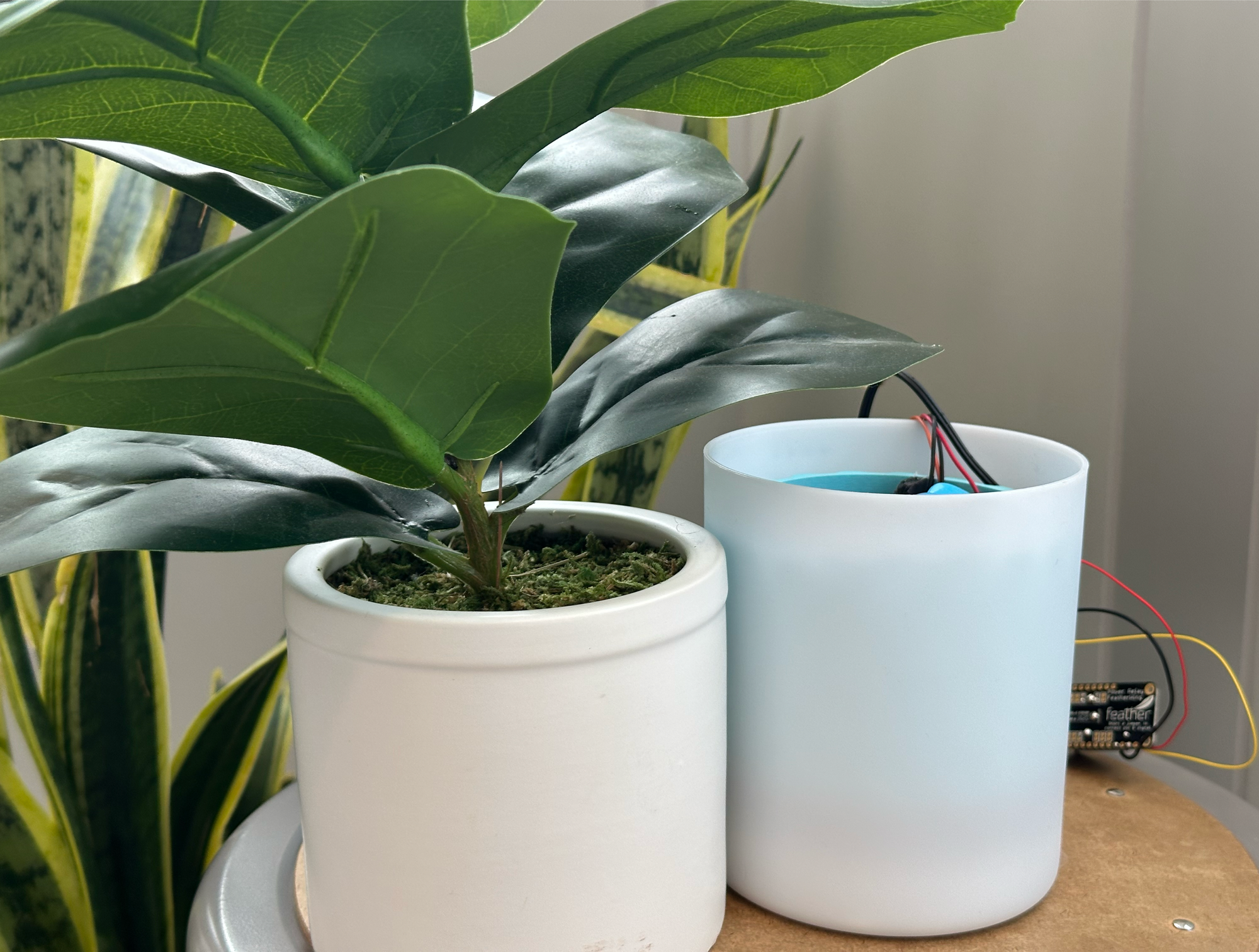
For example, To know if it they should be wearing a jacket to the class, a student could just glance at the ambient plant where the rustling of leaves indicates a windy day, and judge if they want to wear the jacket.
In this example, the student was able to get the information on the weather conditions outside without ever having to take out their phone to check the weather. The subtle hint of the leaves moving, stays in the background unless the user guides their attention towards it.
So how does it work?
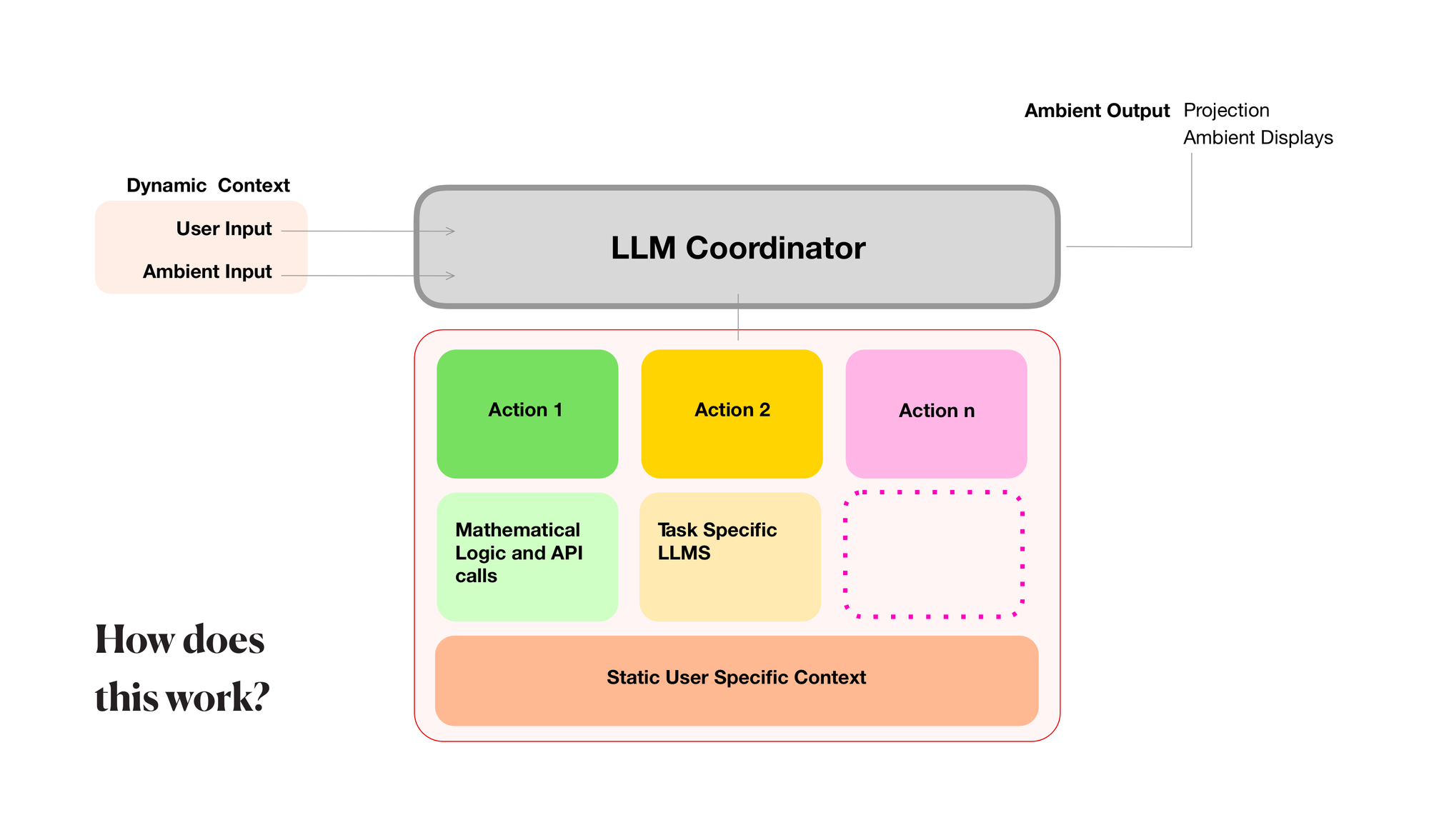
Under the hood, the action centric system is built on a novel architecture. That mindfully uses LLMs to coordinate and pick different actions. The action is then executed by the computer.
As you can see here the system is a) modular, b) allows people to build their own actions c) doesn’t use LLMs where they wouldn’t be necessary.
For example, complex mathematical problems can be solved through traditional computing, in a more reliable and faster way than LLMs. The ambient lamp doesn’t use an LLM to answer the mathematical problems. It delegates the task to a dedicated action that would solve that.
Third party developers can build their own actions. Decide their own output media. So if a developer wants they can have the golden hour’s information be conveyed through a change in the student’s smart home lights’ color, or even through the infusion of a different kind of fragrance into the room.
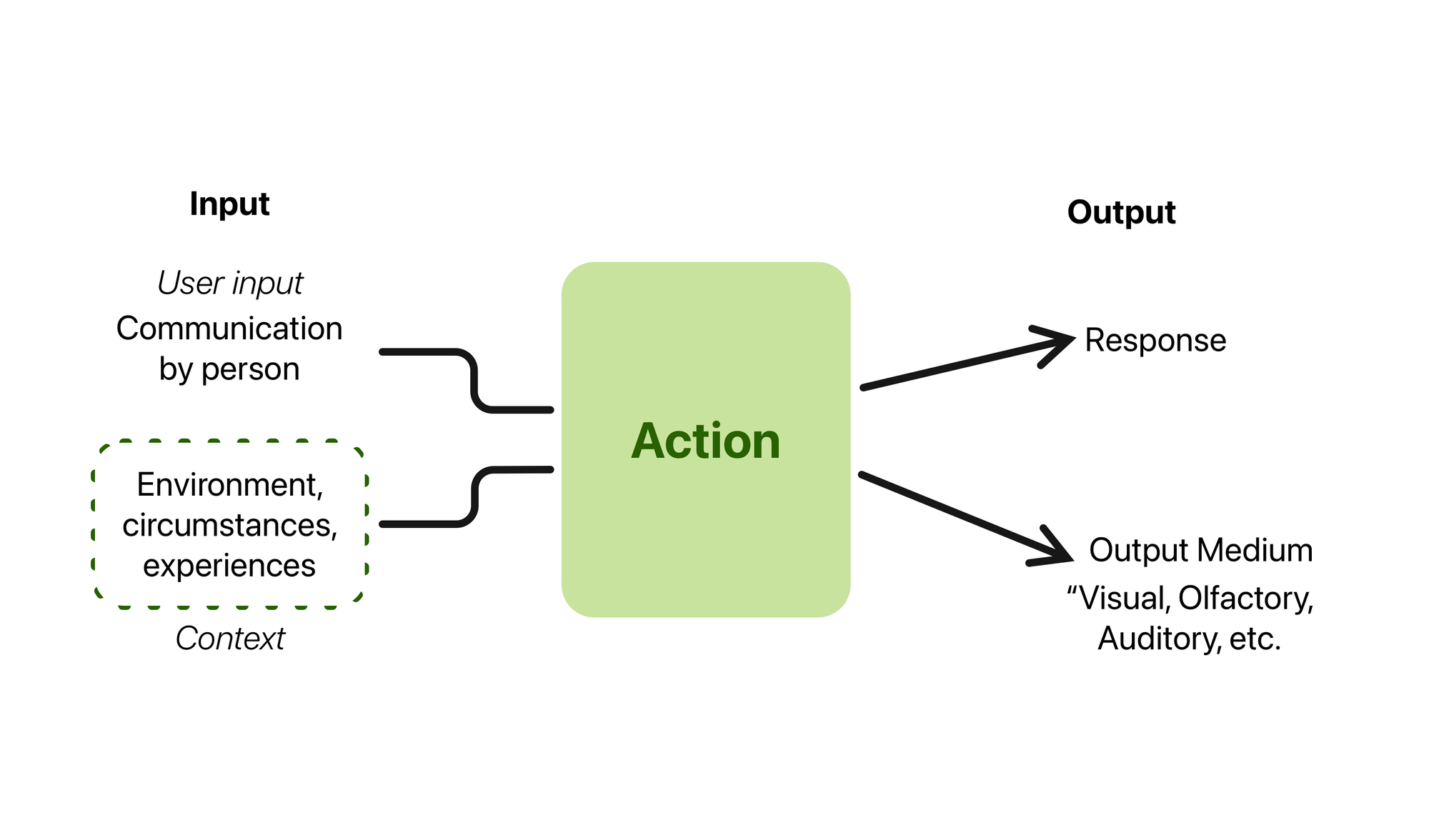
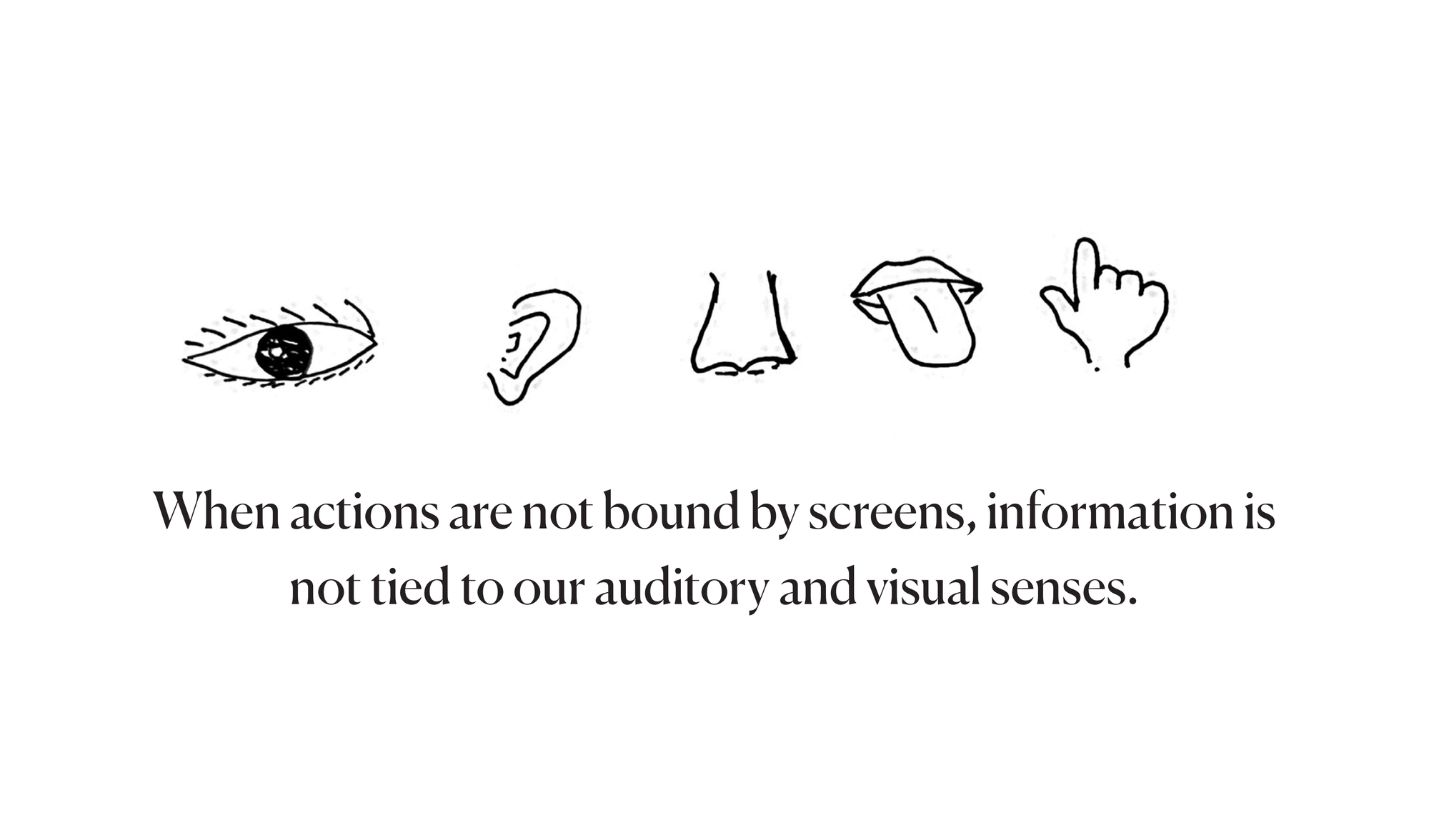
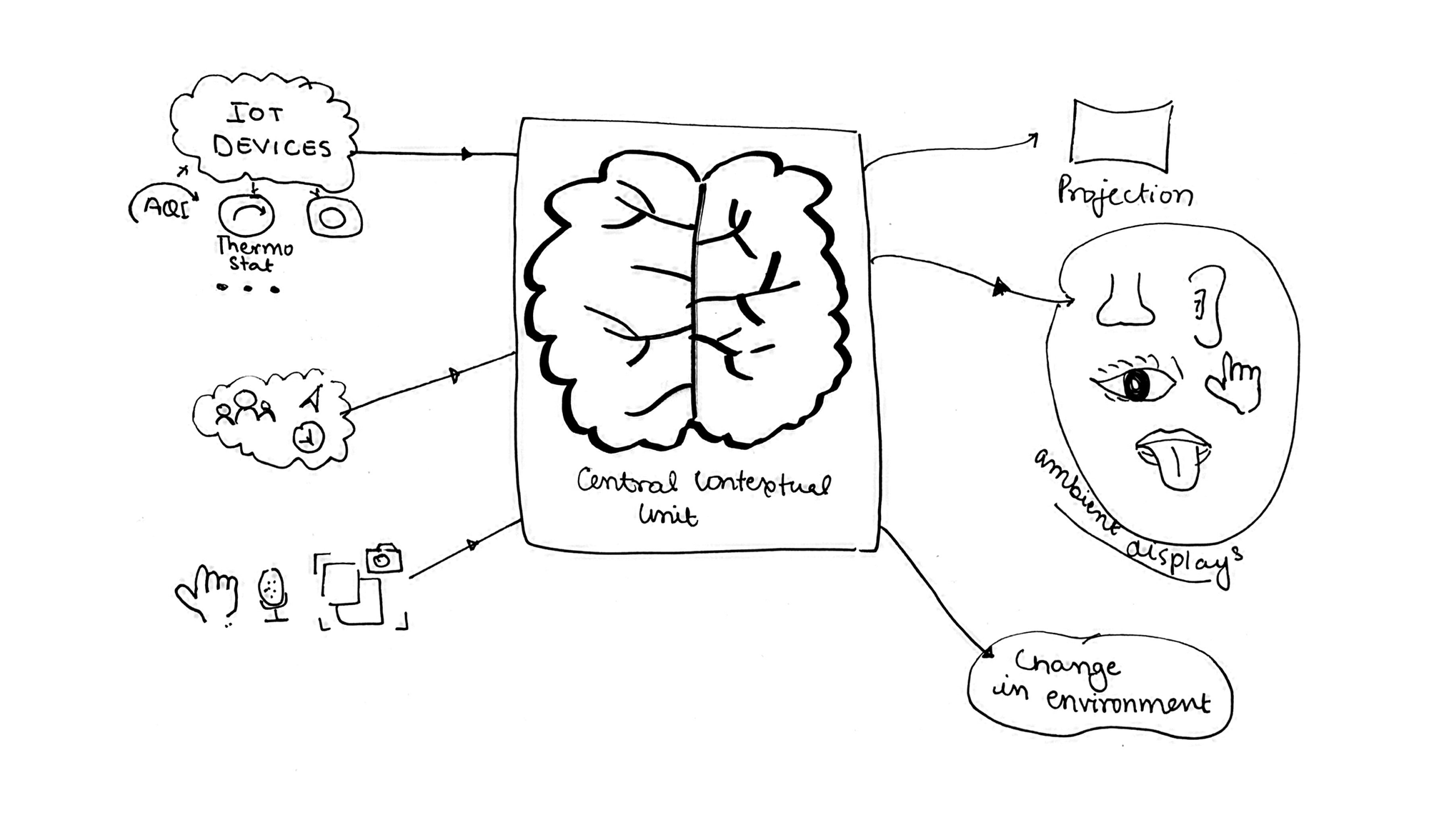
Call to Action the framework
The series of ambient objects are governed by an action centric design framework.
Here’s what it means to be action centric:
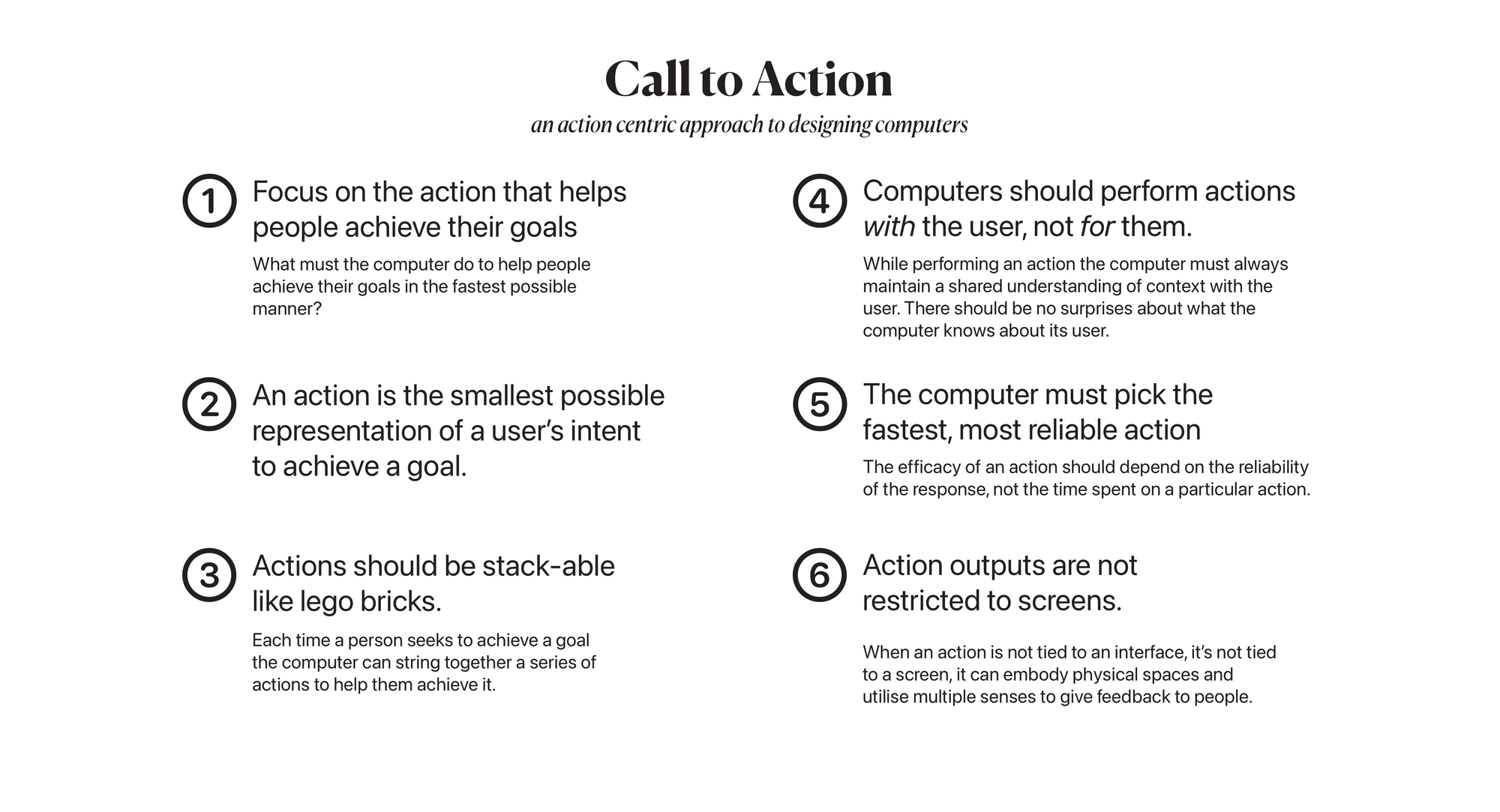
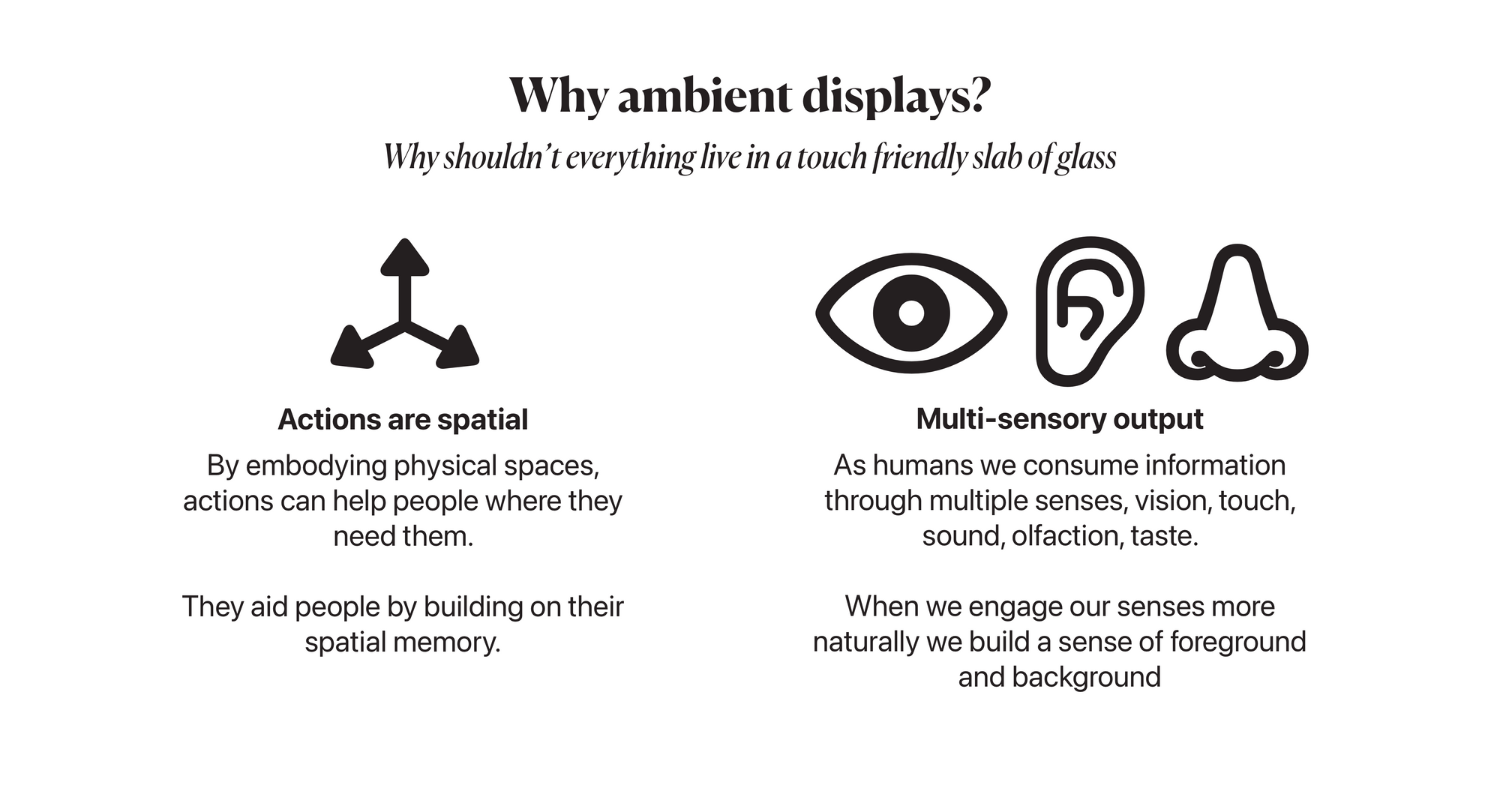
If you’d like to read more about the action centered design framework and my work around it.
You can read more on my thesis here:
Complete Masters Thesis Document: Download Here
Supplementary Material:
Call To Action Zine : Download Here
How to make an "Action" : Download Here
Draft Human Interface Guidelines: Download Here
I’ll be posting more about my work process in the coming days.
Read my thesis in audio format here:
Further Reading on my thesis
Using AI to do User Research with you, not for you
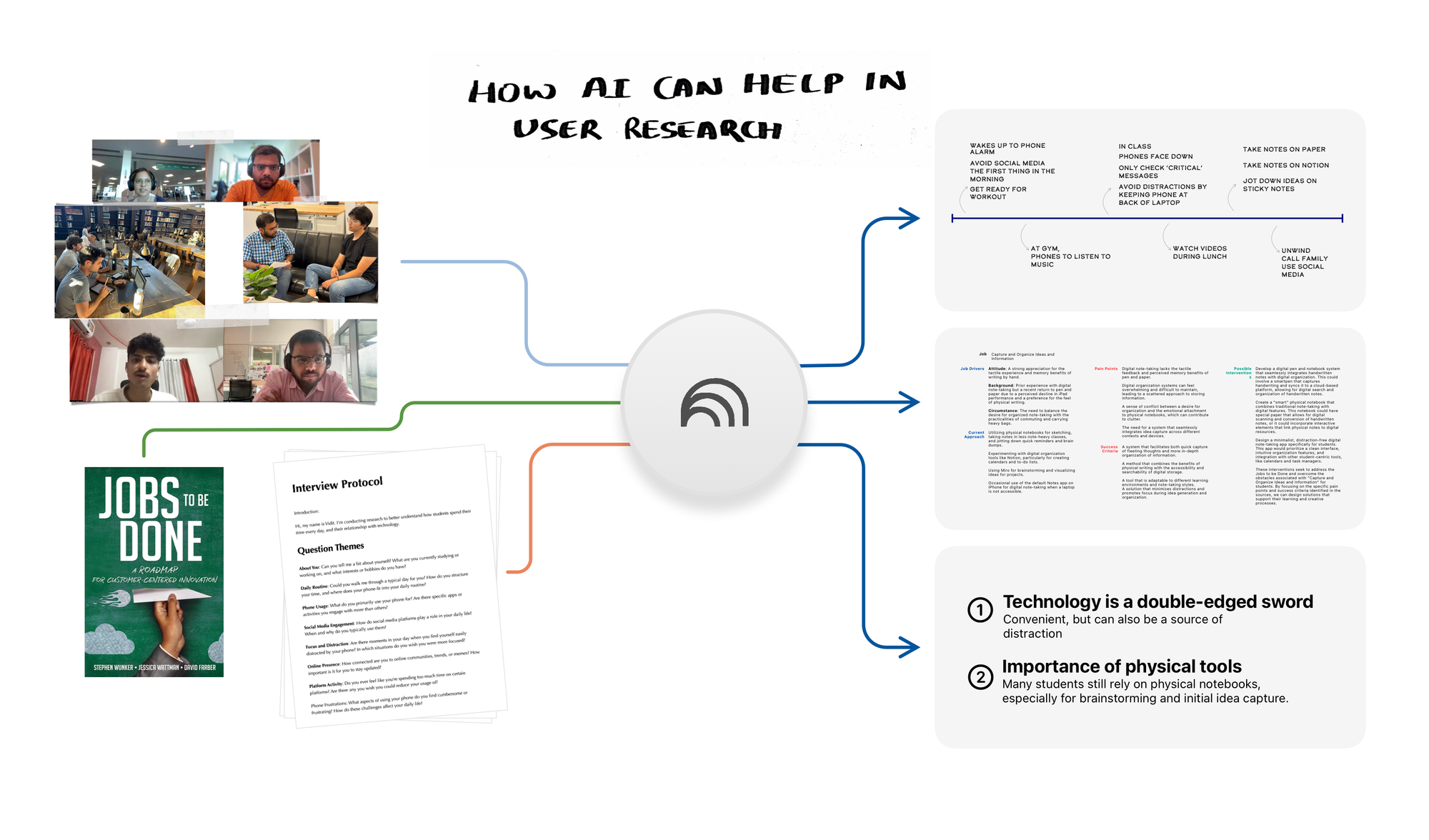

Key Inspirations
"The World is not a desktop", Mark Weiser (1994)
https://dl.acm.org/doi/pdf/10.1145/174800.174801
ambientROOM by MIT Media Lab (1997)

Dynamic Land by Brett Victor
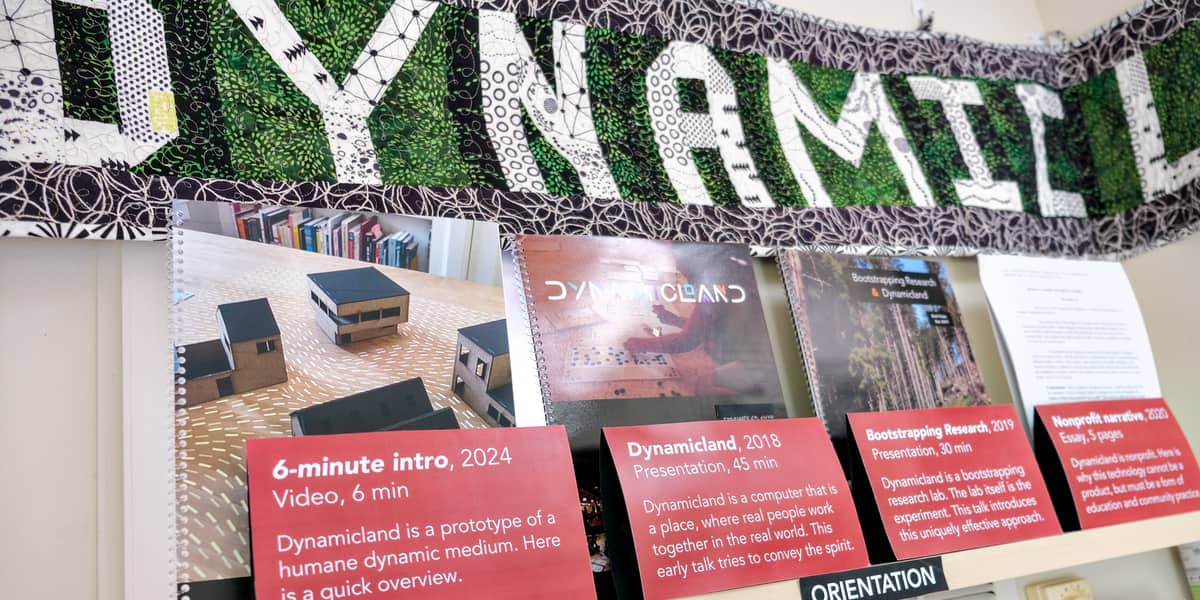
Apple's App Intents Framework
